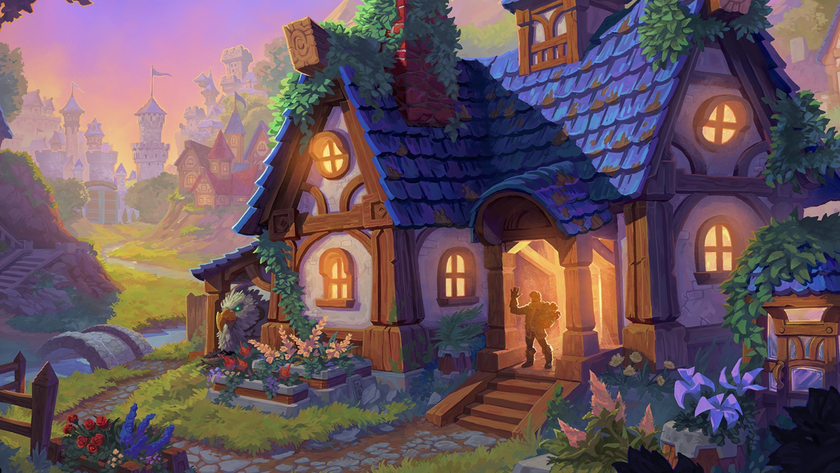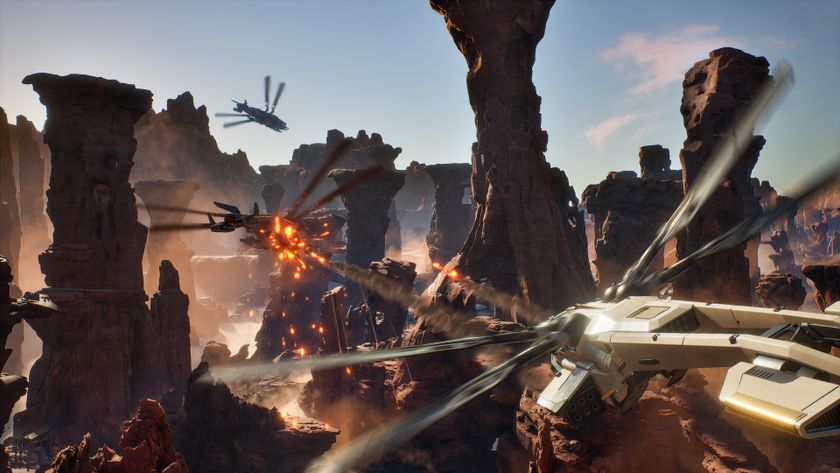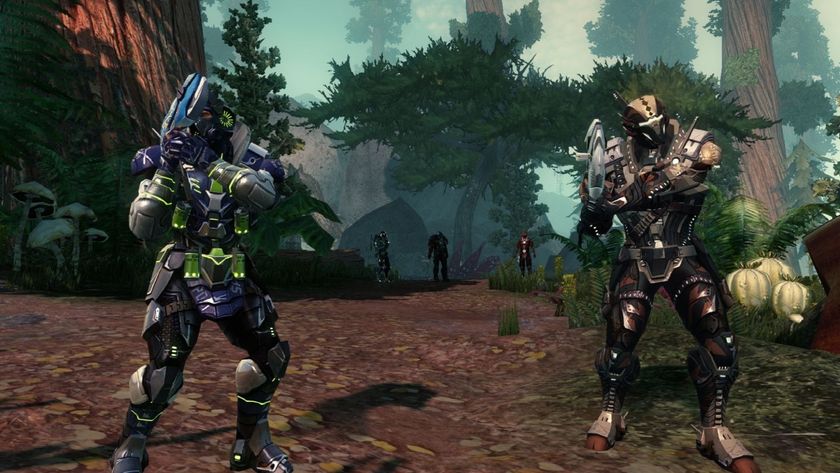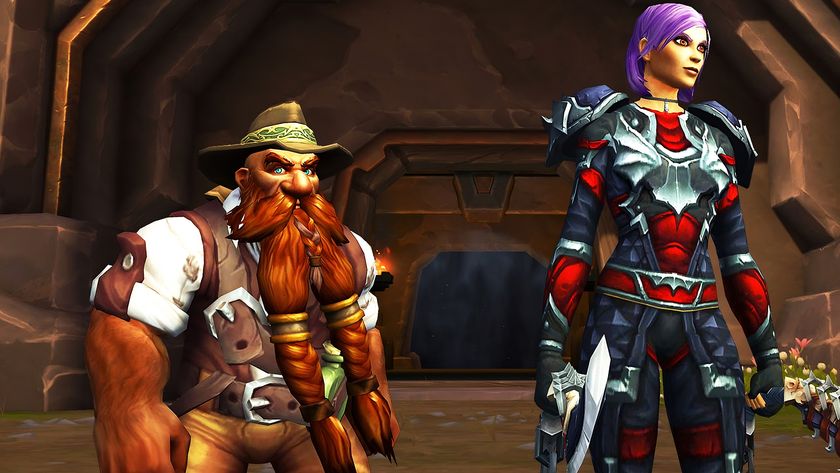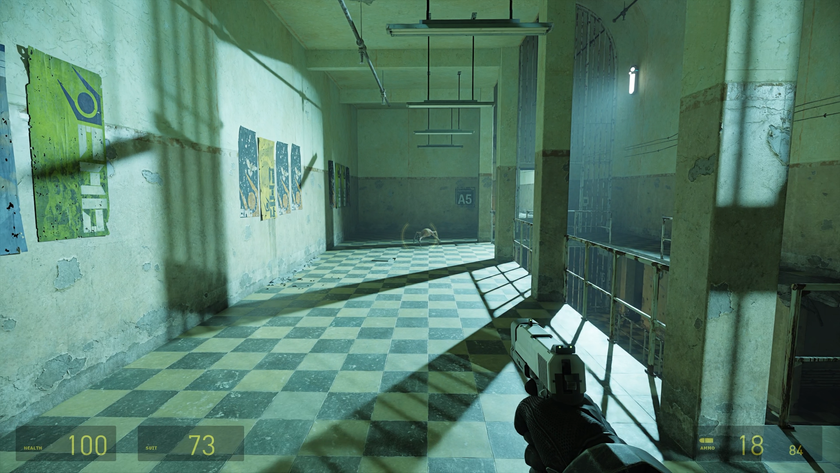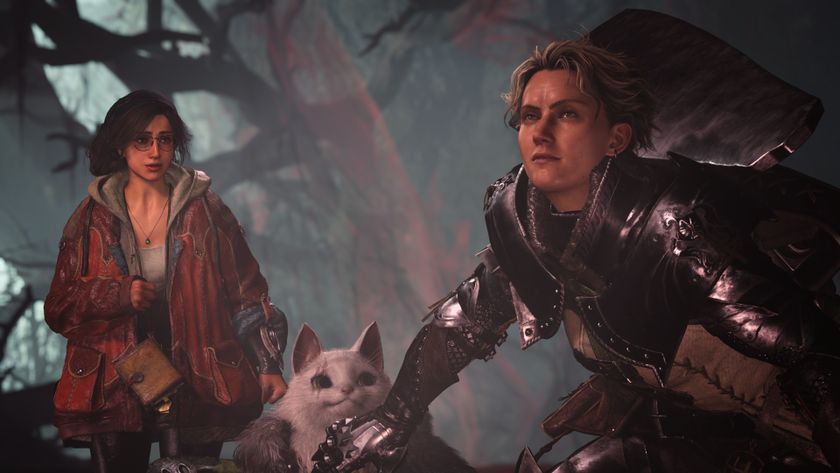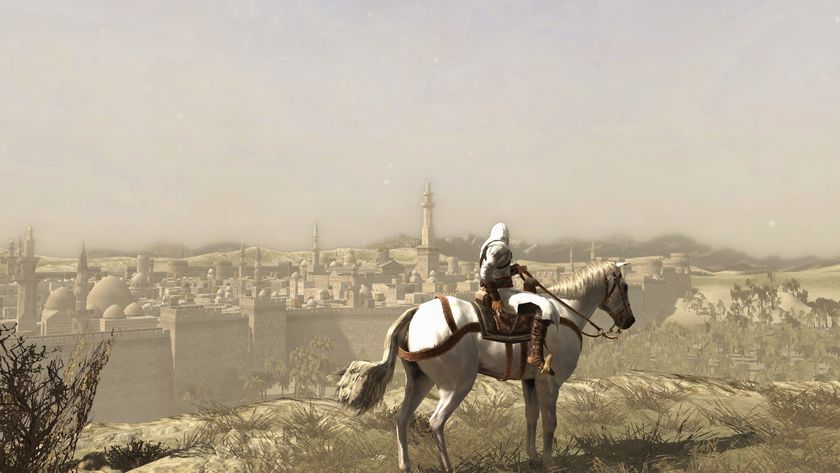A probable future for the MMO: Worlds Adrift and Improbable tech

“The gist of it is, every single thing in the world is an entity. Every single thing is a real thing that is there forever, until someone acts upon it.”
Henrique Olifiers, co-founder of Bossa Studios, is talking about the team’s mysterious exploration MMO Worlds Adrift. Announced in December, a handful of recent gameplay videos have failed to offer much clarity regarding what the game actually is. Spelunking and rope swinging feature heavily, as does meditative exploration, crafting and, most puzzlingly, airship battles. None of this has cohered into a clear vision of what we can expect when the game is opened to players later this year, but one impression remains consistent: it looks ambitious. Maybe too ambitious, for a small studio like Bossa.
It’s true that for a long time, Worlds Adrift was a pipe dream for Bossa Studios. Conceptualised in early 2014 during one of the studio’s monthly internal game jams, the idea was too grand in scale for an independent studio to pursue, especially one which had already found success with smaller titles like I Am Bread and Surgeon Simulator.
“We managed to get something very playable in those four days, but when we started to think about how much work it would be to create a game like that for real, we decided that we couldn’t do it,” Olifiers says.
“We’re a small studio and we like to have teams of five to seven people working on things. We decided that we could not risk changing who we are – to get a team of 50 people to create a game in two years – when there’s a possibility that no one will like it. Maybe it’d join the graveyard of failed MMOs and we’d go down with it, so we shelved it.”
And that could have been the end for Worlds Adrift, were it not for the arrival of technology which could accommodate the concept without putting stress on the studio’s resources.
Real Persistence
Bossa Studios is embarking on what many would regard as the holy grail of MMOs: basically, a truly persistent world where every player – not just those on a specific server, but every single player – can change the world in ways every other player will see. This won’t occur in a fashion hard-baked by the studio in order to allow branching narrational paths, for example, but to literally everything in the game world, down to the placement of rocks.
The biggest gaming news, reviews and hardware deals
Keep up to date with the most important stories and the best deals, as picked by the PC Gamer team.
To demonstrate his point about “every thing being its own entity”, Olifiers offers an anecdote. Worlds Adrift is about exploring a fractured planet, and to do so players can build bigger and better airships. These airships are built from resources discoverable throughout the world, and each constructed component – indeed, every single ‘thing’ in the game world – is an object at the mercy of physics.
Engaged in a heated airship duel during a recent playtest, one of two engines on a playtester’s airship was blown off. As the engine plummeted, the weight of the second engine caused the airship to travel lopsided, dramatically impacting the team’s ability to shoot straight.
“All the players on that ship went to push the remaining engine overboard in order to straighten the ship, but they had built a ship where the walls were too high, so they couldn’t roll the engine off,” Olifiers recalls. “So they had to point their own cannons at the walls and blow them off, in order to make room to push the engine off.”
Later on, another player might happen upon the spillage of this encounter. She might not know what happened or when it had occurred – or even that it was the result of a showdown – but that’s the beauty of a persistent world.
Worlds Adrift is set in the aftermath of a global catastrophe. Thanks to the mistakes of an ancient civilisation, and its exploitation of a mineral with floating properties, the planet has broken apart. The sandbox, which is made of procedurally generated floating islands, has no prescribed goal other than for players to explore the shards of the planet – preferably with friends – in order to piece together what has happened, assuming you care.
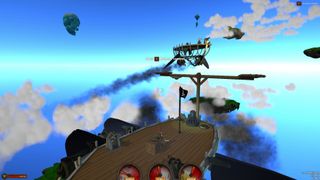
“Funnily enough, some of the inspiration for how things work can be credited to DayZ," says Sylvain Cornillon, Bossa Studios' Chief Technology Officer. "Players enjoy and will establish their own rulesets. We’re hoping that we make a system which is balanced so that playing with other players is an advantage, rather than by yourself.”
“The player doesn’t know exactly what has happened,” Olifiers adds. “It’s an ancient civilisation and the technology is spread around the islands, so the gist of the game is exploration, but you need the means to explore. You can explore by yourself with a small ship, but the best way [to do it] is to have a handful of friends who maintain a larger ship, which is essentially a moving house. You keep expanding it, making it bigger and better defended, which will enable you to go to places where smaller ships can’t.”
A ‘better ship’ won’t be determined by a levelling system, but instead its physical ability to deal with, say, environmental effects, to name one example. “Maybe you’ll find that the wind around a certain island is too strong, so you’ll need a ship good enough to penetrate the wind,” Olifiers says.
“It’s just a prank for the whole industry to be quite honest with you."
This all takes place in a persistent world bound by the laws of physics, the devs claim. If you and your friends have crashed an airship and don’t have the means to carry its valuable wreckage away, the ruins will stay in that location for as long as it takes for other players to loot it. Or maybe, when you return, you’ll find that some of the world’s creatures have nested in the ruins. Meanwhile, mining for valuable resources won’t be as simple as wielding a pickaxe: if you use dynamite, you’d better be prepared to run from the ensuing downpour of debris. It’s in keeping with the studio’s philosophy that the best stories are the ones that grow from when things go wrong.
The physics system is best encapsulated by another of Olifiers’ anecdotes. “If you put a crafting table on the side of an island and you craft an engine, and then the engine falls off the table and starts rolling off the side of the island, then you’d better run after it,” he says.
“You could have predicted that. There’s no surprise there. But when it happens [in a game] it’s shocking. You can try to rope the engine in, but then maybe you’ll be dragged by the weight of the engine… these things I’m describing have happened when we’re playing.
If what Olifiers describes eventuates, Worlds Adrift will boast a level of persistence previously unheard of in massively multiplayer games. Every action by every player will be indelible. If this seems impossible, it’s because conventional wisdom says it is, but the technology under the hood is approaching massively multiplayer from an entirely new angle. It’s the technology which allows Bossa Studios to create a reactive world which no flagship MMO studio has ever managed to achieve.
An Improbable new way to build MMOs
“When I first talked with [Improbable founder] Herman Narula, he described something that really felt kind of impossible,” says Cornillon. “There was a lot of hyperbole about what it is and how it worked, so the next step for me was to go and talk to his tech team. From this pie in the sky technology [described by Narula] emerged a very solvable problem being addressed in a totally new way, compared to how people run server worlds, and the management of MMOs usually.”
Improbable was a name largely unfamiliar to the games industry until early March, when DayZ designer Dean Hall announced he was working with the company. “The technology I had always wanted and tried to make was finally here,” Hall said of Improbable earlier this month.
“DayZ was born out of my aborted attempts to make a database architecture to support my wild mass multiplayer ideas. But now, I didn’t need a ten year plan to make my grand visions of multiplayer come true. I could do it now."
Based in London, Improbable boasts former talent from the likes of Google, Crytek, Ubisoft, Creative Assembly and more. While the company’s website says it wants to change the games industry with “distributed, real-time, persistent simulations”, it also has its sights set on the defence, health and finance industries. Indeed, according to a Wired report, Improbable has recruited several Goldman Sachs software engineers into its ranks.
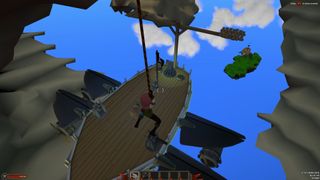
“Improbable gets rid of the lot of the limitations that you usually have in MMOs, like zones or instances,” Cornillon says. “It allows us to have a continuous, pretty much largely scalable world. It can be very large, with almost no limit on what we can do and also very little effort on our side to make behaviors.
“We don’t have to think about optimising for how many entities there are in the world, or what happens when there is no players or lots of players. We don’t have to worry about making the technology which allows the world to be simulated all the time, including the physics elements, in a continuous way.”
“Instead of a central authoritative loop, which is how games and simulations are traditionally made, think of it as a big swarm or orchestra of processors.”
Halfway through my chat with Bossa Studios, Narula himself joins the conversation. While the Bossa Studios partnership was quietly announced mid last year – many months before Bossa made noise about Worlds Adrift – Narula seems relieved by the chance to talk at length about the Worlds Adrift project, which is serving as a “first test case” for the technology. It'll be the first time the general public will see the technology in action.
“What we’ve built is a way of dispensing with the whole Client-Server architecture, which is traditional to regular games,” Narula says. “Instead of one server with a game loop and geographical control over one area – a server which can’t take a lot of load or handle interesting behavior – we have a swarm of processors that live and die as and when they’re needed. These orchestrate together without a game loop, without a central controller, to model and simulate a world, and it just scales, because you have a swarm of these things.”
“Now, instead of a single game engine you have thousands of these workers that are able to collaborate on the fly, in milliseconds, to congregate within a space in the gameworld, and do work that simulates the world. We’re able to siphon off different things, like physics, AI, whatever, to things that are very good at doing that kind of work.
“Instead of a central authoritative loop, which is how games and simulations are traditionally made, think of it as a big swarm or orchestra of processors.”
Cornillon adds: “Imagine an area full of players where you have a server authority over these areas, in the traditional way. If a lot of players converge and there’s a lot of physics going on the server will not handle it, it will fall. That’s why MMOs traditionally don’t do physics. Now there is no area. When there is a lot of players converging [in one place] these processing units will say ‘bloody hell, there is 300 players shooting at one another, we need 300 physics engines to converge here and handle that between them’.”
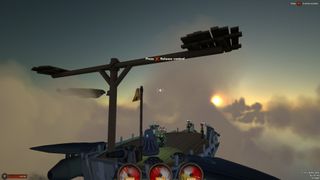
There will be limitations, Narula admits, but these are largely attributable to forces out of Improbable’s control. “One [challenge] is rendering: because the local machine is still running the world, so much stuff might happen in one place that it can’t physically render what is happening on screen. There are also theoretical limits to density: anyone who tells you that anything is infinitely scalable is a liar, because science says you can’t put too much stuff in one place, but the numbers are so much bigger than what you’re used to in games that [the limitation] won’t be relevant to games like Worlds Adrift.”
Indeed, Bossa Studios is designing the game to avoid too many players being in one place at one particular time. “We want the game to have some level of sparsity of players,” Cornillon says. “That’s a design decision: we want the encounters to be dangerous. We don’t want cities.”
The encounters may be dangerous, but this is no survival game. When you die in Worlds Adrift, you simply respawn. You may lose whatever is in your personal inventory at the time, but that’s your fault for not storing it on your airship. Otherwise, you’ll need to rely on the honesty of any friends on the scene to retrieve your lost items and return them to you.
Narula hopes the Improbable tech will have a disruptive force in the gaming industry. “To be honest, the games industry has been doing kinda the same thing for the last decade, very successfully. The reason MMOs have not advanced is because it’s always the same stuff.
“It’s just a prank for the whole industry to be quite honest with you. We’re showing that everything is moving on, the tech is moving on, and the industry has to change with it.”
Whether it’s a prank or “pie in the sky”, it won't be long before the public will have the opportunity to judge: Olifiers says the studio plans to open Worlds Adrift "in the first half of the year” on an Early Access basis, as the studio continues development.

Shaun Prescott is the Australian editor of PC Gamer. With over ten years experience covering the games industry, his work has appeared on GamesRadar+, TechRadar, The Guardian, PLAY Magazine, the Sydney Morning Herald, and more. Specific interests include indie games, obscure Metroidvanias, speedrunning, experimental games and FPSs. He thinks Lulu by Metallica and Lou Reed is an all-time classic that will receive its due critical reappraisal one day.
